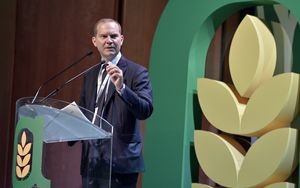(Finance) – “Accelerate the development of national renewable energy production by setting up a growth plan for the sector suited to the needs of Italian companies, which integrates and diversifies supply sources. The agricultural sector can make a decisive contribution to photovoltaics, biogas (cogeneration/biomethane) and biomass”. This is what the president of Confagricoltura said, Maximilian Giansantiat the two days “Farming possible”, organized in Rome by the CIB.
“Agricultural enterprises are ready to make a further contribution to the sector. Already now the companies of the biogas they represent 6.5% of Italian renewable production, but more can be done. However, some interventions are needed – explained Giansanti – attributable to an organic plan from a regulatory point of view and certain times to be able to implement the provisions of the PNRR. There is also a need for a review of the Integrated National Plan for Energy and Climate in which the role of bioenergy, including biomass forestry, whose contribution is not valued today”. Fundamental in this regard is the definition of a tax regime on existing biogas plants quickly.
Similarly for Confagriculture it is necessary to value the digestion anaerobic for the livestock sector, even more central in relation to the objectives of greenhouse gas reductions (-55% by 2030)”. “Without prejudice to the 2030 objectives – recalled the president of Confagricoltura – in this process we must not lose any plant, also safeguarding electricity production”.
Another important chapter is the carbon farmingwith the EU Commission’s proposal establishing the first European framework to certify, reliably and on a voluntary basis, high-quality carbon removals.
“Agriculture can play a leading role thanks to the sequestration of carbon through the use of targeted agronomic practices – concluded Giansanti – The sequestration of carbon in the soil by farmers And foresters it will constitute a new green business model to fight climate change and increase the resilience of the environment, thus pursuing European objectives. The umpteenth proof that environmental and economic sustainability, properly managed, go hand in hand”.
